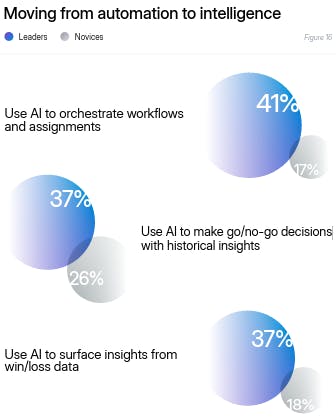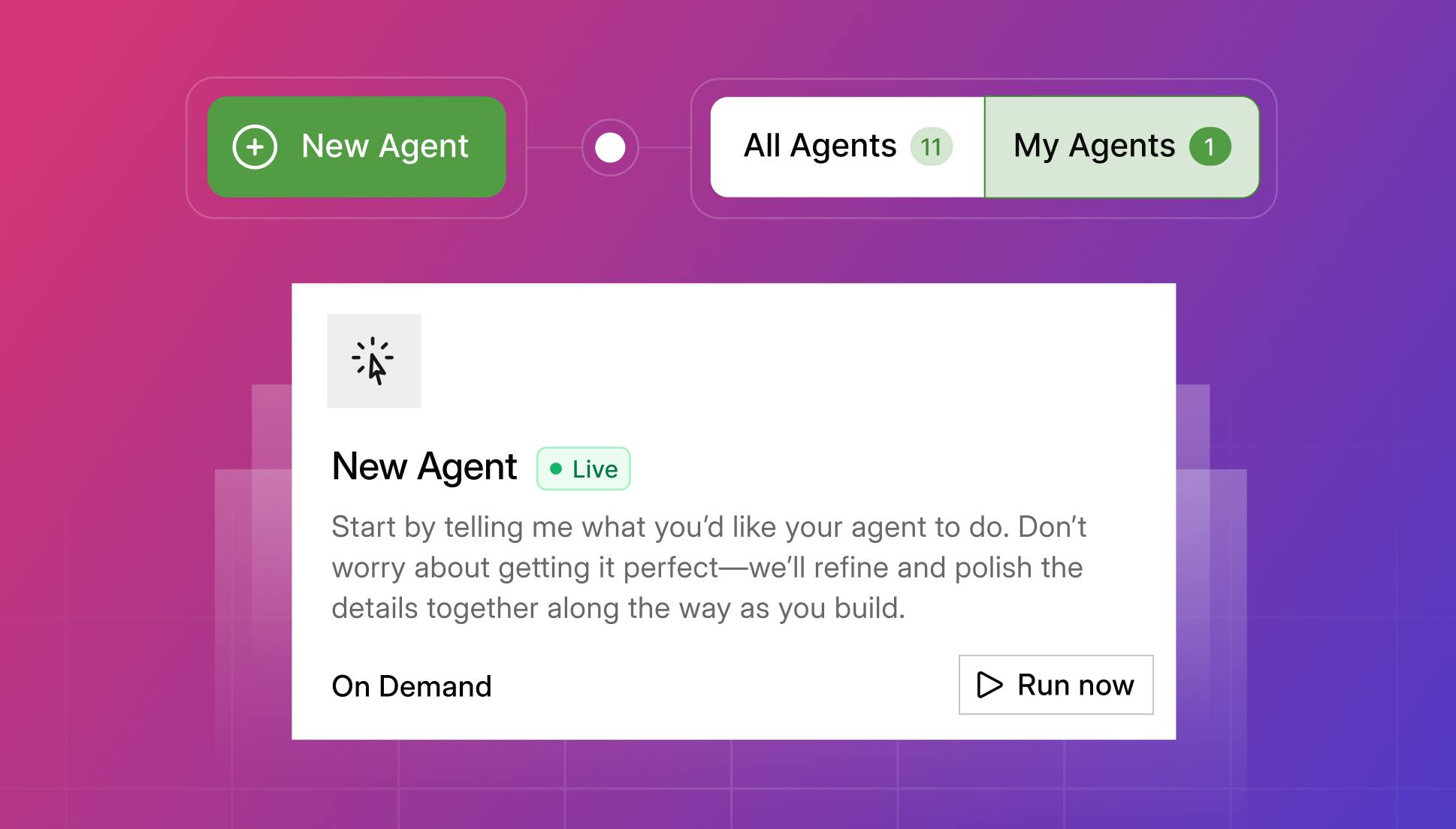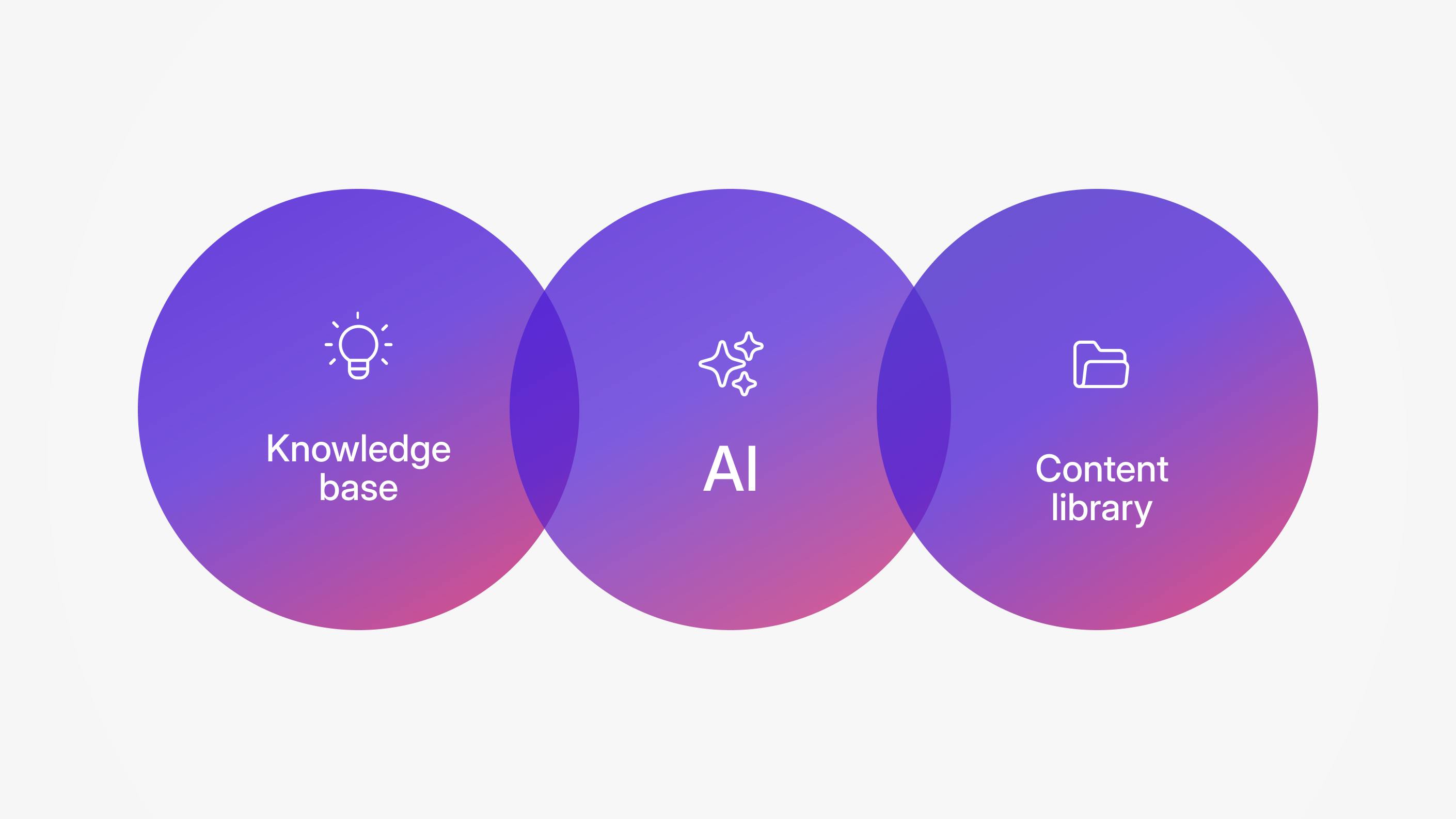Knowledge management is the discipline of capturing, organizing, and making organizational knowledge accessible so teams can reuse it to drive outcomes. For many companies, it’s also the backbone of proposal management, compliance, sales enablement, and customer success. Unfortunately, traditional approaches often fall short. This happens for a number of reasons: information lives in silos, content ages quickly, and retrieving accurate responses can consume hours.
But now, AI is changing that reality. When paired with a centralized content hub, it can simplify how knowledge is stored, retrieved, and used across the business. Instead of sifting through outdated files or chasing down subject matter experts (SMEs), team members can access approved answers in seconds. The impact is measurable (and reportable): faster response times, less rework, and more consistency across proposals and customer interactions.
In this post, you’ll see how AI reshapes knowledge management. We’ll cover practical use cases, the best practices for implementation, and the metrics leading teams track to prove return on investment (ROI). By the end, you’ll have a clear understanding of how AI can help your organization make its knowledge both scalable and actionable.
Why AI matters for knowledge management
AI is already embedded in the way top-performing organizations manage knowledge. According to the 2025 State of Strategic Response Management (SRM) Report, top performers are more than twice as likely as their peers to use AI for orchestrating workflows and surfacing insights from win/loss data. These organizations recognize that speed alone isn’t enough. AI also enables them to prioritize effectively, reuse more content, and focus their energy on opportunities with the highest value.

The practical benefits are significant, too. AI reduces the friction of retrieval by enabling natural language queries, surfacing precise answers instead of long lists of search results. It also organizes content more effectively, automating tagging and classification so information is easier to find later. This makes it possible for distributed teams to work from the same trusted set of knowledge, regardless of department or location.
Breaking down silos is another major advantage. Without AI, content often stays locked in departmental repositories or individuals’ personal files. AI-supported hubs like the Responsive Platform make knowledge searchable and reusable across the company. In high-growth organizations, this translates to stronger collaboration and faster execution. The SRM Report highlights that 88% of the higher performers have at least some form of centralized knowledge management, compared with just 67% of lower-performing organizations.
Leaders in the field emphasize that this shift is as much about quality and culture as it is about access. Wolfgang Zimmermann, Director of Proposal Management & Operations at Swisscom, explains on page 38 of the SRM Report that his team is moving away from the template approach and building a library of modular text blocks with clear ownership. “It’s not just about saving time, it’s about trust,” he notes. “If someone from Legal knows they own a block, they’ll keep it up to date. That makes it reusable. That makes it safe.”
“People still think: if I keep the knowledge in my head, I’m valuable. We have to change that. We need to write things down… I say to my experts: Who’s going to do your job in five years? We’re going to lose a lot of know-how in the next 10 years to retirement. If we don’t make that knowledge usable and accessible, we lose it.”
Daniel Tscharner
Head of Bid Management at Swisscom
Wolfgang’s and Daniel’s perspectives highlight why AI adoption succeeds only when paired with sound content governance and a cultural commitment to knowledge sharing. As Wolfgang points out, AI’s real advantage is that it enables people to ask questions in natural language and get real answers without needing to know where the content lives or who wrote it. For junior team members especially, “It’s not about search. It’s about answers.”
In practice, this means that pairing AI with a structured content library ensures that surfaced content is not only quick to find but also accurate, up to date, and ready for use. That combination of access, trust, and cultural alignment is what makes AI-driven knowledge management such a powerful advantage.
Key applications of AI in knowledge management
AI transforms knowledge from static storage to an active resource that guides decisions and accelerates collaboration. The most effective uses strengthen human effort by automating routine tasks, sharpening retrieval, and surfacing hidden insights.
Automated tagging and classification
One of the most impactful applications of AI is automated tagging and classification. Instead of manually sorting content, AI can apply consistent labels across thousands of entries. That makes it easier for users to search by topic, persona, or product line and get the right results immediately. In proposal workflows, this means less time searching and more time refining responses for the customer.
AI-powered search
AI-powered search is another game-changer. Tools like Responsive Ask use conversational AI to return precise answers from your content library, complete with a TRACE Score™ that indicates quality. Users can type natural questions — such as “What are our SOC 2 controls?” — and get validated responses without needing to know exact keywords. Meanwhile, Responsive LookUp supports AI-driven searches of your knowledge base from anywhere and is ideal for responding in online portals, where many security questionnaires are still issued.
Content quality control
Content quality control is another area where AI provides leverage. With features like Quality Check and TRACE Score™, organizations can automatically flag outdated, duplicate, or incomplete content. With these signals, SMEs have clear direction on where to focus their updates, ensuring the knowledge base remains accurate and trustworthy. Agent Studio takes this even further, allowing teams to easily configure AI agents that proactively monitor and update content at scale.
Predictive insights
Finally, AI can deliver business intelligence. By analyzing usage patterns, it can recommend resources before teams even know they need them. For example, if a certain security certification is frequently included in winning proposals, AI can surface that content more prominently. This helps guide strategy and increases win rates by ensuring the best material is always top of mind.
Mining for gold: Knowledge management for the AI era
Best practices for deploying knowledge management AI
AI can accelerate knowledge management, but its impact depends on the groundwork teams put in around people, processes, and governance. The organizations seeing the strongest results are the ones treating AI as part of a disciplined knowledge management strategy. That means clean content, clear ownership, and user training.
Curated, clean content is the foundation
AI’s effectiveness depends on the quality of the content it draws from. A messy or outdated repository will only amplify bad information. High-performing teams start by curating their library, prioritizing reusable content types like product summaries, IT protocols, and customer references. Modular building blocks (i.e. short, flexible content units) allow AI to generate more targeted answers than static templates.
Governance and role-based access
Protecting sensitive information is non-negotiable. Governance models should define who owns each entry and who can access it. Tools like Responsive’s Profile Center make that easier by enabling teams to enforce role-based access, ensuring that legal clauses and compliance protocols are only accessible to authorized users. Assigning a single owner to every piece of content and automating review cycles, such as pinging SMEs every two months, further strengthens governance and prevents stale entries from creeping back into circulation.
Prompt-writing training and context setting
Even the most advanced AI needs clear direction. Training teams on how to write effective prompts improves the quality of responses and reduces the risk of misinterpretation. Our guide on prompting an RFP agent demonstrates how context such as deal size, region, or product focus can drastically shape output. When users understand how to guide the AI, they’re more likely to use it, and they’ll get faster, more accurate answers when they do.
Ongoing monitoring and refinement
Knowledge management isn’t a one-time project. In fact, the field of knowledge management is growing so quickly that some of the biggest companies in the world are building out teams exclusively dedicated to it. This is because while AI can clearly help to streamline processes by enabling faster response times with more consistency, it still requires regular oversight.

Monitoring usage rates, TRACE Score™, and duplicate flags ensures that content stays relevant. Automated alert AI agents created in Agent Studio (no code required) can also notify SMEs when their content drops below a set quality threshold. For example, an AI agent could track content scores or star ratings in the knowledge base and send alerts to the assigned SMEs when updates are needed, keeping the system reliable without adding unnecessary manual effort.
Measuring success
To prove the impact of AI in knowledge management, leading organizations track metrics that connect directly to business outcomes:
- Time saved: Measures how much faster teams complete tasks when AI reduces manual searching and rework, demonstrating immediate efficiency gains to stakeholders.
- Search success rates: Tracks whether users find the information they need, showing retrieval effectiveness and highlighting tagging or content quality gaps when rates are low.
- Adoption rates: Reflects whether teams trust and use the system consistently, with growth signaling accessibility and dependability, and low adoption pointing to governance or training issues.
- Content reuse rate: Captures how often approved content is repurposed across proposals, confirming that curated content is valuable, accessible, and structured for AI to deliver accurate results.
- SME workload reduction: Shows how much routine query volume shifts into self-service, easing repetitive requests and allowing experts to focus on strategy and collaboration.
- Content quality score improvement: Indicates better accuracy, clarity, and structure across the library, often measured through Quality Check or TRACE Score™, which flag outdated or weak entries.
- Impact on deal velocity: Demonstrates whether proposals move faster through approvals, proving AI’s role in shortening turnaround times and accelerating revenue opportunities.
- Cycle time for content updates: Measures how quickly content is refreshed, approved, and made available, where shorter cycles signal strong governance and ensure trusted knowledge.
- Win rates: Shows whether curated, AI-ready content contributes to higher win percentages, directly tying knowledge management to business success and validating governance processes.
Metrics in action
At Microsoft, the Proposal Center of Excellence (PCoE) built one of the world’s largest content libraries and embedded AI to ensure it was both accessible and reliable. They tracked efficiency gains through metrics like average time saved per question, which came out to 30 minutes, and usage rates across teams, which rose by 60%. By attaching these metrics to business outcomes, Microsoft demonstrated that AI-driven knowledge management not only reduced repetitive work but also enabled staff to dedicate more time to strategic proposal activities and customer engagement.
Perceptyx uses Responsive AI to complete RFP first drafts in 30 minutes and independently answer 90% of security questionnaires. A four-person team now manages 75 RFPs and 150 VSQs annually without adding headcount, while SMEs spend their time on reviews instead of repetitive requests. Sales and customer-facing teams use Responsive Ask for quick, on-brand answers, further protecting SME time and boosting sales productivity.
The experiences of both Microsoft and Perceptyx align with what the 2025 State of SRM Report highlights on pages 27–28 and 32: Leaders go beyond tracking efficiency metrics like time saved and usage, connecting those gains to broader outcomes such as revenue impact, win/loss insights, and smarter deal prioritization.
From information to impact with AI
AI accelerates knowledge management by making information more accessible, consistent, and actionable, but you cannot expect the technology to work in isolation. Its success depends on a foundation of curated content, clear governance, and human oversight. Organizations that combine structured libraries with AI-powered tools see measurable gains in speed, accuracy, and collaboration.
Responsive AI brings these elements together with tools that are intuitive to use for all users. With AI-powered search, content governance, and analytics, it enables teams to access trusted knowledge instantly, wherever they work. By integrating AI into your long-term knowledge management strategy, you can ensure your team spends less time chasing answers and more time driving outcomes.
Next steps: Learn how to structure your content for AI-readiness with our guide, How to build a tender content library, bookmark Best practices for knowledge management, and explore all the features the Responsive Platform offers.
